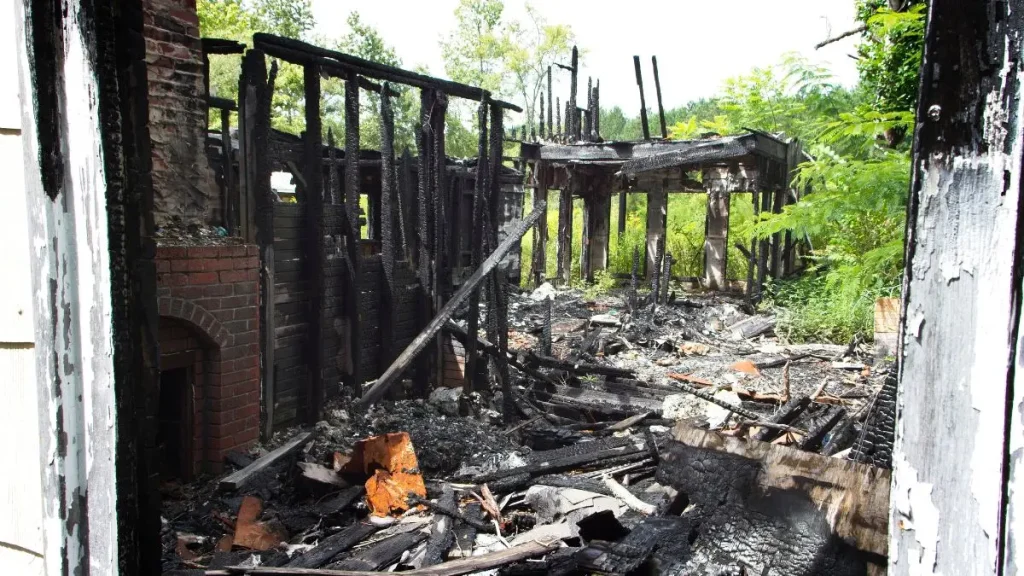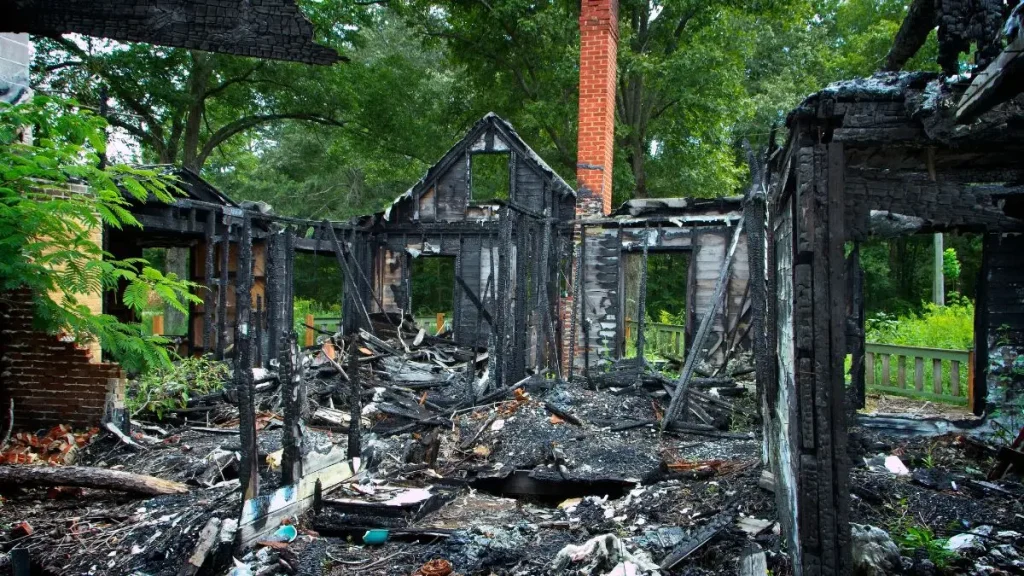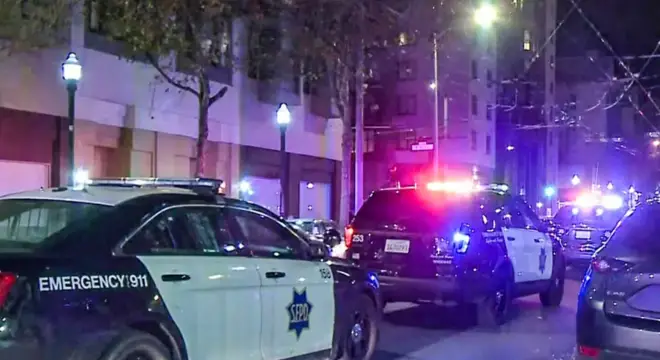Colorado House Fire Claims Unknown Victim; Cause Yet to Be Determined
I can’t shake the image of what first responders must have seen when they arrived—flames tearing through a remote Colorado home in the middle of the night, with no clear sign of who might be inside.
This all unfolded just after 1:30 a.m. Tuesday in Poudre Canyon, west of Fort Collins. Firefighters got the call about a blaze near the 8700 block of West Highway 14. By the time crews reached the scene, one home was already engulfed, and the fire—though contained before sunrise—had left behind nothing but debris and uncertainty.
The shocking part? Investigators couldn’t even confirm at first if someone was inside. That answer came only later, after a forensic team combed through the charred rubble and found human remains.
It’s moments like these that remind us how quickly everything can change. One moment you’re asleep, the next—sirens, smoke, and silence.
What questions does this raise for you? Do you think fire risks in Colorado are being taken seriously enough during red flag warnings?
Fire Breaks Out Overnight in Poudre Canyon
If you’ve ever driven through Poudre Canyon, you know how quiet and remote it can feel. But in the early hours of August 5th, that stillness was shattered.
Just after 1:30 a.m., dispatchers at the Larimer County Sheriff’s Office got a call: a home on fire along West Highway 14, near the Greyrock Trailhead. First responders—fire crews from Poudre Canyon Fire Protection District, LCSO deputies, UCHealth EMS, and wildland emergency teams—rushed to the scene.
They found a blaze that had already swallowed a single home. The fire didn’t spread beyond an acre, but the damage was absolute. According to the official release from Larimer, firefighters contained it before sunrise. Still, the impact lingers—not just for the structure lost, but for what they found inside later.
This wasn’t just a fire. It was a tragedy that unfolded in total darkness, and no one yet knows exactly how it started.
Whether it’s a rural canyon or a suburban block, tragic incidents like the Suitland fire that claimed a young boy’s life prove how widespread and unpredictable house fires really are.
Human Remains Discovered After Forensic Excavation
I wish I could say that investigators found answers quickly—but this wasn’t that kind of scene.
Because of how intense the fire was, authorities couldn’t even confirm right away if someone had been inside the home. The structure was too far gone. So, a forensic team was brought in to go through what was left, piece by piece.
Late that Tuesday night, after hours of sifting through rubble, they found what everyone had feared—human remains.
According to Coloradoan’s report, investigators are now working with the Larimer County Coroner to identify the person and figure out how they died. That part could take time, and until then, there’s a heavy silence surrounding this case.
As someone following this closely, I know you’re probably wondering the same thing I am: Who was this person? Were they the homeowner? A guest? And what caused the fire in the first place?
We don’t know yet—but those answers are coming.
Fire Under Red Flag Conditions Raises Alarm

Here’s what makes this even more unsettling—the fire broke out during red flag fire weather conditions. That means hot, dry air and strong winds made it much easier for flames to grow fast.
If you’ve ever gotten a red flag alert on your phone and ignored it, this is why it matters.
The LCSO Phantom Canyon wildland crew stayed on-site all day after the fire was contained. Their job? Prevent flare-ups, soak remaining hot spots, and make sure it didn’t reignite under risky conditions.
This isn’t just about one house burning down. It’s about how close this could’ve come to becoming a full-blown canyon fire. When the land’s this dry, one spark can spread disaster.
If you live in a rural or forested area, you already know the risk. But this incident is a serious wake-up call: fires aren’t waiting for summer peaks anymore—they’re showing up fast, and in unexpected ways.
In Buffalo, for example, a recent house fire displaced multiple residents and highlighted just how fast things escalate—even in urban settings.
Evacuations and Emergency Response
I always ask myself during these stories—how quickly were people warned? Did anyone else come close to danger?
Turns out, emergency alerts did go out quickly. The sheriff’s office sent a voluntary evacuation alert to 591 registered contacts, and deputies went door-to-door to make sure everyone nearby knew what was happening.
That’s the kind of response you want in a rural area where cell coverage can be spotty. According to the Larimer County release, the evacuation was lifted by 3:50 a.m., once the fire was fully under control.
If you’re in Larimer County and haven’t signed up for emergency alerts at NoCoAlert, now’s the time. I’ve seen far too many fires move faster than expected. And these alerts? They’re often the only thing standing between safety and catastrophe.
If you follow local emergency updates regularly, you’ll know how fast these alerts evolve. I’ve found it helpful to stay connected with verified safety updates shared through community WhatsApp channels that often share alerts faster than news sites.
What’s Next in the Investigation?
Right now, there are more questions than answers—and if you’re feeling frustrated about that, you’re not alone.
We still don’t know who the victim is. The Coroner’s Office is working to identify them and will release their name, as well as the cause and manner of death, once everything is confirmed. This process isn’t quick, especially in cases involving fire. Investigators often rely on dental records, DNA, or even clothing remnants to put together the pieces.
As for what started the fire? That’s still under investigation, too.
You can expect updates over the coming days—possibly weeks. Authorities usually don’t rush this part. They’ll look at everything from electrical systems to flammable materials, and even weather factors.
If you live nearby or have any tips, you can reach out to the Larimer County Sheriff’s Office or Crime Stoppers. Sometimes, small details help paint the bigger picture.
What do you think might have caused this fire? Drop your thoughts or theories in the comments—someone else might be wondering the same.
Is This Area Prone to Fires?
If you’re wondering whether this was a freak accident or part of a bigger trend, you’re asking the right question.
The truth is—Poudre Canyon has a long history with wildfires. From the devastating Cameron Peak Fire in 2020 to smaller flare-ups since, this area walks a fine line between scenic beauty and seasonal danger.
What makes it risky? Dense vegetation, dry summers, unpredictable winds—and homes nestled right into all of it.
And this latest fire? It’s another reminder that living in Colorado’s wildland-urban interface (WUI) means being constantly prepared. One dry tree limb, one missed ember, and everything can change. That’s not drama—it’s the hard reality of living near nature.
I say this not to scare you, but to help you understand that this isn’t isolated. It’s part of a pattern, and if we ignore it, we’ll keep seeing tragedies like this one.
It’s not the first time authorities have had to piece together identities after a fire—a similar investigation took place in Peru, New York where a person was found dead and the cause remained unclear for days.
How Authorities Identify Victims After Fires?

I’ve covered a lot of fire incidents over the years, and one thing I’ve learned? Identifying a victim in a fire is never as quick or simple as people assume.
In this case, the damage was so severe that investigators had to excavate the rubble piece by piece. When they found human remains, the next step wasn’t announcement—it was science.
Typically, the coroner’s office will look at dental records, medical implants, or DNA comparisons if fingerprints aren’t viable. Sometimes, they rely on circumstantial evidence like where the body was found, clothing, or missing persons reports—but only when there’s strong alignment.
It’s a slow process, but that’s because it needs to be right. Families deserve certainty—not assumptions.
If you’ve ever wondered why these updates take days or even weeks, now you know. It’s not bureaucracy—it’s careful, methodical work in the middle of a heartbreaking situation.
How You Can Stay Safe During Fire Season?
Reading about these fires is hard. But the harder thing? Not being ready when it’s your turn.
If you live in or near wooded areas like Bellvue or Poudre Canyon, fire season prep isn’t optional anymore—it’s survival.
Here’s what I always recommend:
- Sign up for emergency alerts at NoCo Alert it’s fast and free.
- Pack a go-bag with essentials: documents, medications, chargers, pet supplies.
- Create defensible space around your home—trim trees, clean gutters, and clear dry brush.
- Practice your evacuation plan like it’s a fire drill. Know where to go. Know how to leave fast.
You don’t have to panic—but you do have to plan. Because when the flames show up at your doorstep, seconds matter.
A Tragic Reminder of Fire’s Power
I wish this story had a better ending. But sometimes, the only thing we can take from loss is the warning it leaves behind.
A person lost their life in this fire. A home was reduced to rubble. And an entire community was reminded how fragile safety can be when conditions turn dry and unforgiving.
But maybe, in reading this, you’ll walk away a little more alert. Maybe you’ll check your smoke detectors tonight. Maybe you’ll take red flag warnings a bit more seriously.
That’s what stories like this are really for—not just headlines, but wake-up calls.
What’s your wildfire plan? And more importantly—are you ready to use it?
For more real-world coverage like this—from local tragedies to fire safety tips—visit our our website Build Like New.
Disclaimer: Details in this article are based on information available as of August 6, 2025. The investigation is ongoing, and updates will be added as authorities release more findings. For official statements, please refer to the Larimer County Sheriff’s Office.


